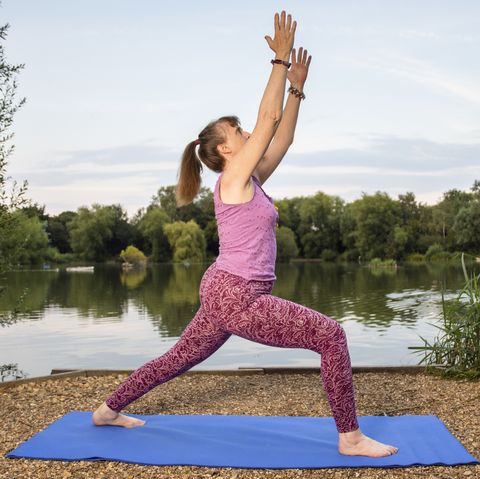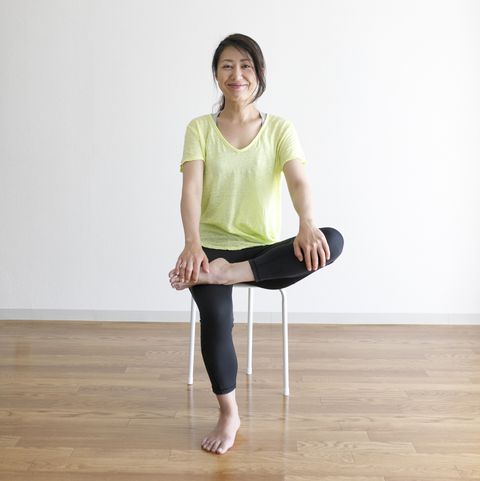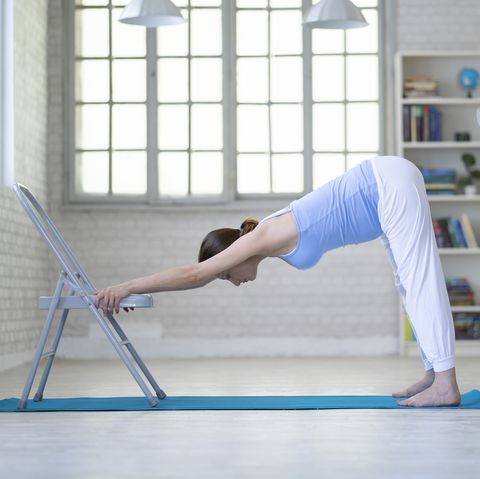From verywellhealth.com
Arthritis can affect any of your joints, including those in your feet. Joint damage from arthritis can cause pain, swelling, and physical changes to the joints.
Arthritis is a general term that describes more than 100 rheumatic diseases that affect the joints. The main symptoms of arthritis are pain and swelling in one or more joints. Arthritis can be acute (sudden and short-term) or chronic (gradual and long-lasting).
With most types of arthritis, the joints become worn down or damaged over time. This is one reason arthritis is common as people age, although there are types of arthritis that are related to other causes, including genetics.
This article will cover the early signs of arthritis in the feet, arthritis conditions that affect the feet, causes of arthritis, and more.
Doucefleur / Getty Images
Early Signs of Arthritis in Feet
Each foot contains 33 joints, 26 bones, and more than 100 muscles, tendons, and ligaments. The joints are covered with articular cartilage - connective tissue that covers the surface of bones in a joint. Its primary function is to reduce friction during joint movement.
Arthritis can affect one or more of the joints of your foot. You may have symptoms in one foot or both feet. Arthritis will cause the joints to wear down and lose their cartilage. As a result, the bones will rub against each other, causing pain.
The soft tissues in joints might also become worn. Over time, the joint will not move and work as it should.
- Pain: When arthritis affects the feet, you will feel pain early on. The pain might be intermittent, or it can occur after physical activity. Foot pain this early can come and go. It might be worse in the morning or at night, depending on the type of arthritis you have. Foot pain occurs while standing, putting pressure on the feet, or moving the feet and ankles.
- Swelling: The feet might be swollen and sore from inflammation - the body’s natural response to injury or illness. Inflammation in the feet might cause the skin at the affected joints to feel warm and appear red. In addition, the feet might feel tender to the touch. Pain and swelling might also occur with rest.
- Stiffness: Arthritis can cause your feet to feel stiff. You might also experience decreased range of motion of the affected joint. Stiffness often occurs in the morning upon awakening or after periods of inactivity. Stiffness tends to improve throughout the day with movement.
Arthritis symptoms in the feet can start suddenly and get worse quickly or develop gradually. Depending on the type of arthritis you have, one foot or both feet might be affected.
Over time, arthritis in the feet can worsen, leading to advanced symptoms. More advanced symptoms of foot arthritis include:
- Joint deformity: Arthritis will cause the cartilage in the joints to wear away. Once this occurs, the muscles and ligaments around the affected joints become weak, leading to misshapen and deformed bones.
- Bone spurs: When joint damage occurs, extra bone might form in the affected joint. These growths appear as knobby growths. In addition, bone spurs sometimes affect joint function.
- Mucous cysts: Bumpy fluid-filled sacs that present as ridges in the feet, usually occurring at the ends of the toes or under the toenails. Because of their location, these cysts can be painful, such as with walking and rubbing against footwear. Mucous cysts also can put pressure on nerves if they grow too large.
Types of Arthritis That Can Affect the Feet
Different types of arthritis can affect the feet, including osteoarthritis (OA), rheumatoid arthritis (RA), gout, psoriatic arthritis (PsA), and ankylosing spondylitis (AS).
Osteoarthritis
Osteoarthritis is known as wear and tear arthritis, which is expected as people age but can also affect younger people. OA causes joint cartilage to wear away, leading to bone-on-bone pain and bone spurs.
When OA affects the feet, it commonly affects the metatarsophalangeal joint (MTP)—the joint that connects the big toe to the foot. OA can also affect the midfoot.
Rheumatoid Arthritis
RA is a type of autoimmune arthritis that occurs because the immune system malfunctions and starts to attack healthy tissues, mainly the synovial linings of the joints. RA often starts in the feet, and because RA is symmetrical, it will affect both feet.
RA will cause inflammation of the small joints and soft tissues of the feet. It can cause severe pain and joint damage in the feet very early in the disease, even before a diagnosis can be made and treatment can start.
RA can affect both the ankles and feet. In addition, it can affect the hindfoot (the heel), the midfoot (at the top of the foot), and the forefoot (toes and ball of the feet).
Gout
Gout is a type of inflammatory arthritis resulting from too much uric acid in the body accumulating in a joint. It most commonly affects the feet and, frequently, the big toe. Research shows that the range of motion at the back of the foot and MTP joint is reduced in people who experience gout in their feet.
Psoriatic Arthritis
Like RA, psoriatic arthritis is an autoimmune disease where the immune system malfunctions and attacks healthy tissues. In PsA, those attacks are directed at the joints and the entheses - the places where tendons and ligaments meet bone. It frequently affects one or both feet. Foot problems are among the earliest signs of PsA.
Foot problems linked to PsA include:
Dactylitis: This is the term used to describe inflammation of an entire toe (or finger). Also called sausage digits, it is common in people with PsA.
Heel pain: Heel pain in PsA commonly causes inflammation of the Achilles tendon, the ligament that connects the heel bone to the calf muscle.
Bottom-of-the-foot pain: PsA can cause inflammation of the plantar fascia, the ligament that stretches from the heel to the toes. If the plantar fascia is inflamed, you might experience pain in the sole (bottom) of the foot.
Nail changes: PsA can cause dents in the toenails, nail thickening, nailbed separation, and discoloration of the toenails.
Additional foot problems: PsA can also affect the MTP joints and cause swelling at the ball of the feet and hammertoe—an abnormal bend at the middle joint.
Ankylosing spondylitis is a type of inflammatory arthritis that affects the spine and large joints. Like PsA, AS is an autoimmune disease that affects the entheses.
AS can lead to heel pain at the Achilles tendon and sole pain at the plantar fascia. Pain and tenderness in these areas can affect a person's walking ability.
Causes of Arthritis
Different types of arthritis conditions will have differing causes. Common causes of arthritis include:
- Wear and tear from overuse of a joint
- Age (OA is common in older adults)
- Injury
- Infections
- Being overweight
- Muscle weakness
- Genes or family history
- Autoimmune disorders
Normal wear and tear of joints with age is the most common cause of OA. Infection and injury can cause cartilage tissue breakdown, leading to OA. OA can also run in families, and your risk for the condition is higher if you have a family history of OA.
RA, PsA, and AS are autoimmune diseases that occur when the body’s immune system attacks healthy tissues, resulting in inflammation of the joints. The exact cause of why the immune system malfunctions is unknown, but researchers have discovered genetic markers related to all three conditions.
Risk factors for gout include being male, overweight, overconsumption of alcohol, eating purine-rich foods, and having certain health conditions (i.e., high blood pressure or diabetes).
How Is Arthritis Diagnosed?
To determine whether arthritis is the cause of foot pain, a healthcare provider will start by asking about your symptoms, general health, and medical history. Next, you will be asked when and where the pain began and what worsens or improves symptoms.
The healthcare provider will also examine your foot and ankle for swelling and tenderness. You may be asked about your footwear to determine if your shoes provide sufficient support while walking.
A test called a gait analysis is generally included in the physical examination. The healthcare provider will want to observe how you walk with this test. The test also examines the line-up of the bones of the feet, your stride, and the strength of the ankles and feet.
Additional testing for foot arthritis includes:
- Imaging: X-rays can detect joint space narrowing (a sign of cartilage loss), bone changes, joint damage, or bone spurs. Other types of imaging, including bone scans, computed tomography (CT) scans, or magnetic resonance imaging (MRI), might be done if X-rays can’t pinpoint the source of symptoms.
- Bloodwork: Blood tests can help your healthcare provider determine what type of arthritis you might have. Different types of bloodwork can help diagnose RA, AS, or PsA.
- Joint fluid test: Your healthcare provider will use a needle to draw fluid from an affected joint to diagnose or rule out gout. Urate crystals are detectable when the joint fluid is examined under a microscope.
When to See a Healthcare Provider
If you experience foot pain or find you are having gait problems, call a healthcare provider. Arthritis can cause severe pain, affect your mobility, and lead to joint damage.
Seek immediate medical care to rule out infection if you have a fever and any part of your foot is hot or inflamed.
Summary
Types of arthritis that can affect the feet include osteoarthritis, rheumatoid arthritis, psoriatic arthritis, gout, and ankylosing spondylitis. Causes of foot arthritis are aging, injury, genes and family history, and autoimmune disorders.
Diagnosing arthritis typically involves a review of symptoms and medical history, a physical examination, imaging, and lab work. You should make an appointment with a healthcare provider if you start experiencing foot pain that doesn’t resolve with rest or if you have problems walking.
A Word From Verywell
Arthritis can be a painful and disabling condition, especially if left untreated. Treatment for arthritis can focus on symptom relief and maintaining joint function to reduce the potential for disability. You might need to try different treatments or a combination of treatments before you find something that works best to manage your arthritis symptoms.
:max_bytes(150000):strip_icc():format(webp)/GettyImages-1199366246-7b2d0ddd47d947fc86ffa565babab922.jpg)




